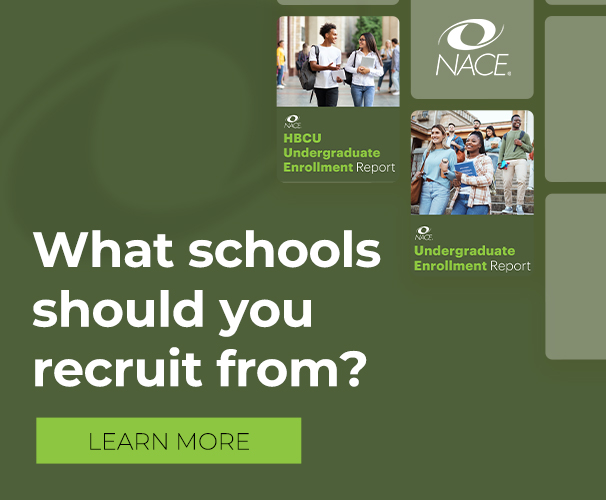NACE Journal, August 2019
Highlights from the mega-session at NACE19
Alma Clayton-Pedersen led NACE19 attendees in a mega-session focused on making excellence inclusive, an initiative she established during her tenure at the American Association of Colleges & Universities (AAC&U) as vice president for education and institutional renewal (2001-2010) and a senior scholar (2010-2013).
Clayton-Pedersen, who serves as a knowledge-based director on the NACE Board, asked participants to consider three things as the session proceeded:
- What is your definition of diversity?
- Is your organization attending to diversity, equity, and inclusion (DEI) effectively?
- Has your organization been influenced by the diversity and inclusion of your students/employees? If so, how is it working for you?
Selected highlights from her presentation and the session appear here.
Making Excellence Inclusive
Resources From the Inclusive Excellence
Mega-Session
• “Inclusive Excellence: Challenges & Solutions for Higher Education & Employers” (NACE19 presentation)• “Making Excellence Inclusive” (NACE19 handout)
• Examples: Commitment Statements
Access these resources here.
AAC&U’s Making Excellence Inclusive (MEI) initiative, funded by the Ford Foundation in the early 2000s, is designed to advance greater intentionality in diversity and inclusion work in U.S. higher education by providing useful guidance in making excellence inclusive.
But while it launched to provide higher ed with a framework by which to embed diversity and inclusion into its mission of academic excellence, the MEI concept applies to the world of work, where the work force is increasingly diverse. Moreover, with students as the nexus, MEI is especially relevant to career services and university relations and recruiting professionals who bridge the gap between campus and career.
Re-envisioning Diversity and Inclusion
Many people think of diversity in terms of differences by group, but diversity, in the context of both the campus and the workplace, recognizes individual differences as well as group and social differences.
Consequently, while it is important to recognize group and social differences—gender, gender identities, race, ethnicity, country of origin, class, and ability as well as differences around culture, politics, religion, and other affiliations—individual differences also are part of diversity. These manifest in a variety of ways, including personality, learning styles, and life experiences.
Despite the broad definition, diversity alone is not enough. It requires inclusion, defined by Clayton-Pedersen as the “active, intentional, and ongoing engagement with diversity in ways that increase one’s awareness, knowledge, cognitive sophistication, and empathic understanding.”
Together, diversity and inclusion provide a process by which excellence and equity—in the classroom, on campus, and in the workplace—can be achieved. Students and employees gain the skills, competencies, and understanding they need to engage in the 21st century global environment.
For students, MEI means expectations that all students achieve these essential learning outcomes:
- Knowledge of human cultures and the natural and physical world;
- Intellectual and practical skills;
- Individual and social responsibilities; and
- Integrative learning.
MEI and the Intentional Organization
Infusing diversity into the life of the organization or institution requires these entities to examine and consider new approaches to their mission and purpose.
Clayton-Pedersen laid out five concepts that organizations and institutions intent on making excellence inclusive follow.
The intentional organization:
- Considers the impact of decisions on those from various cultures, identities, and perspectives;
- Considers how to enhance learning for everyone in the organization intentionally;
- Creates communication, coordination, and collaboration synergy across the organization;
- Makes the most of the uniqueness of each person to enhance key outcomes; and
- Uses learning facilitators, facilities, and resources to strengthen our nation’s diverse democracy and the quality of life for all.
Further, making excellence inclusive, says Clayton-Pedersen, means establishing hallmarks of excellence and organizational effectiveness; operationalizing inclusion across organizational functions; and creating education and professional development processes that have diversity, equity, and inclusion learning at their core.
How do organizations and institutions actualize equity? Clayton-Pedersen cites five principles for “creating equity by design”:
- Clarity in language, goals, and measures.
- Equity-mindedness as the guiding paradigm for language and action.
- Practices and policies to accommodate differences in students’ and employees’ learning.
- Continual process of learning, disaggregating data, and questioning assumptions about relevance and effectiveness.
- Pervasive, institution-wide/organization-wide enactment.






